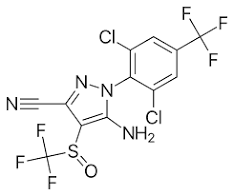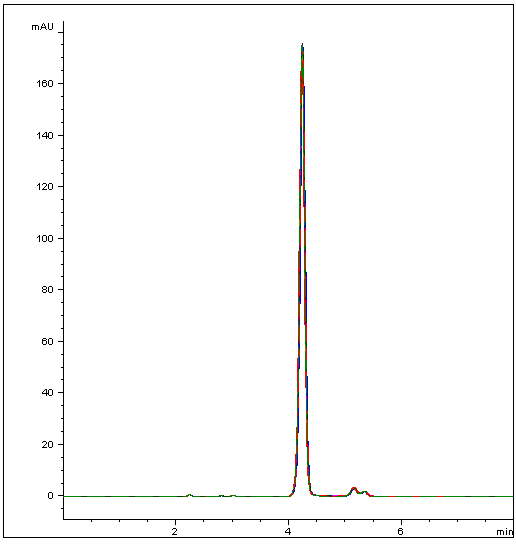A Reproducible Method for a Phenylpyrazole Insecticide
A rapid, sensitive, and reproducible method has been developed for this Insecticide. The data below, (an overlay of 10 chromatograms) illustrates how the compound can be adequately retained and detected using this straightforward method.
A phenyl ring in the column stationary phase provides strategic use of π-π Interaction with the analyte making possible the use of a very simple, Mass Spec-friendly mobile phase with formic acid as an additive.

Peak:
Fipronil
Method Conditions
Column: Cogent Phenyl Hydride™, 4μm, 100Å
Catalog No.: 69020-15P
Dimensions: 4.6mm x 150mm
Mobile Phase: 60:40 Acetonitrile / DI Water with 0.1% Formic Acid
Injection vol.: 1μL
Flow rate: 1.0mL / minute
Detection: UV @ 254nm
Sample Preparation: 0.01% Solution in 50:50 Acetonitrile / DI Water
%RSD: <0.1%
t0: 1.5 Minutes
K’: 2.5
Notes: Fipronil is a Phenylpyrazole insecticide and Acaricide. It was originally used in agriculture as seed coatings, but is commonly used as flea and tick control in dogs and cats. Fipronil is believed to act as a noncompetitive blocker of GABA-gated chloride channels.
Note 2: Capacity is determined using the following equation: k = (tR-t0)/tO
- tR = Retention Time of an Analyte Peak
- tO = Retention Time of non-Retained Peak



